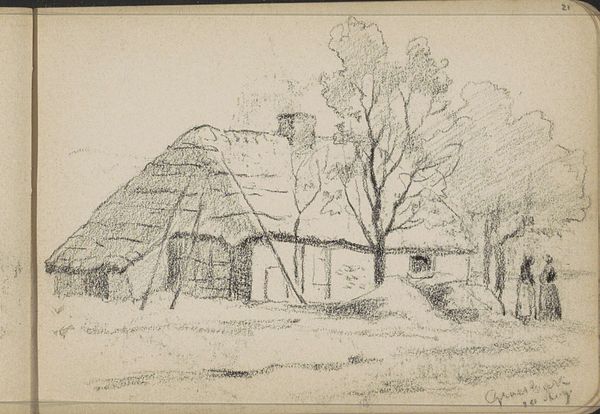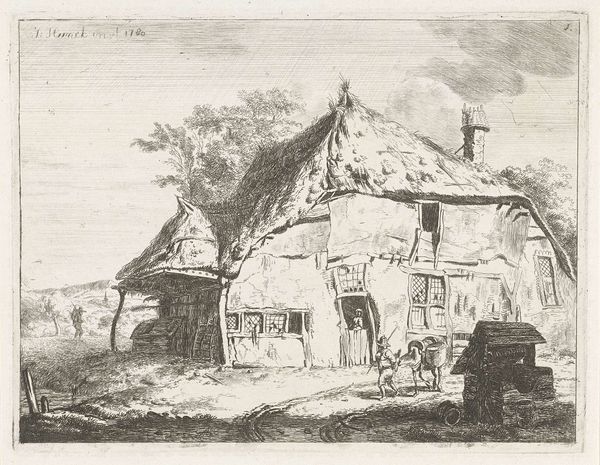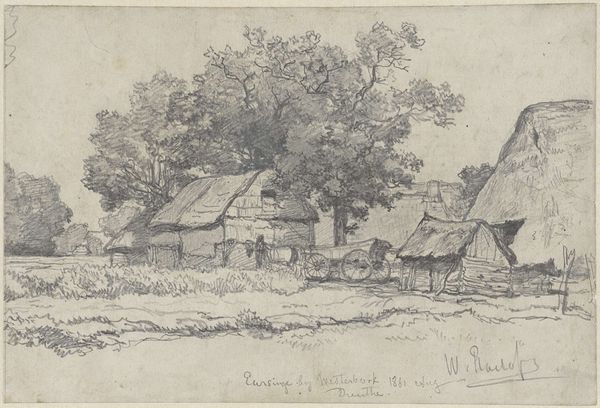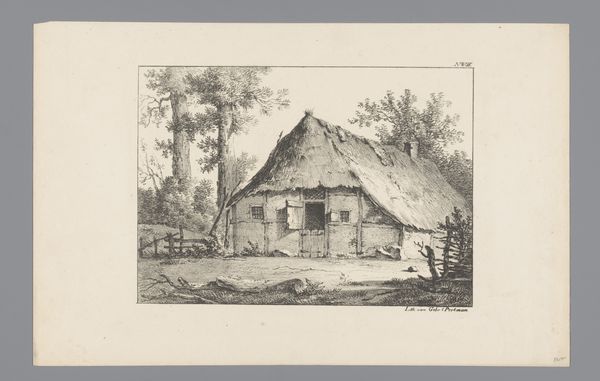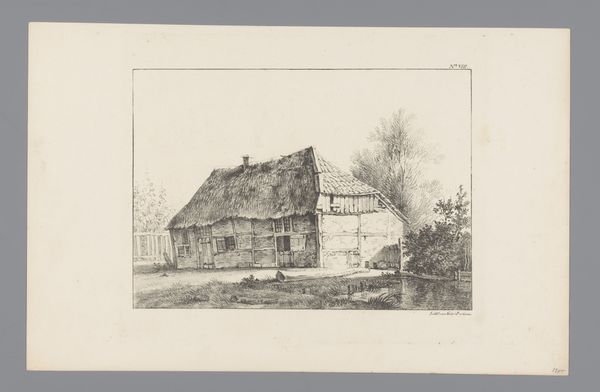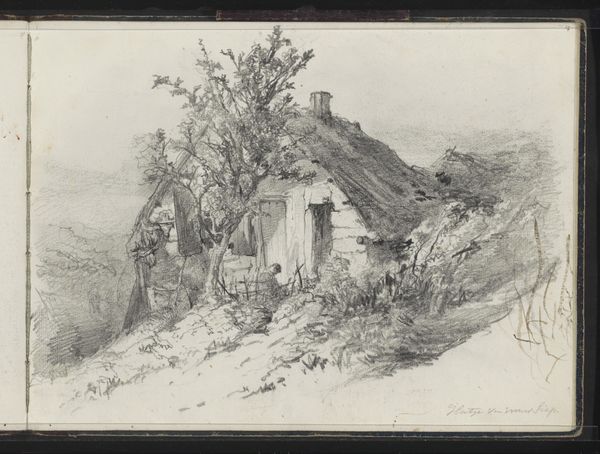
Huis met rieten dak bij Sneppenschrik in Capelle aan den IJssel 1846
0:00
0:00
drawing, pencil
#
drawing
#
landscape
#
coloured pencil
#
romanticism
#
pencil
#
genre-painting
Copyright: Rijks Museum: Open Domain
Editor: So this is "House with a Thatched Roof near Sneppenschrik in Capelle aan den IJssel" made by Johannes Tavenraat in 1846. It's a pencil and colored pencil drawing. I'm struck by how simple and unassuming it is. What's your interpretation of it? Curator: This unassuming scene speaks volumes about the romantic idealization of rural life in 19th-century Netherlands. Note how the house, likely inhabited by farmers, is rendered with a certain picturesque charm, minimizing the potential hardships associated with agricultural labor. Do you think the artist intended to present a realistic depiction or rather a romanticized vision? Editor: I see your point. It does feel very idealized. Not exactly gritty realism. Curator: Exactly. This ties into broader social narratives of the time. Industrialization was rapidly changing society. Representations like these often served to reinforce a sense of national identity rooted in a simpler, agrarian past, subtly overlooking the economic disparities that existed. This also ties in how landscape art at this time served a social function – as propaganda of national identity and pride. Editor: It’s fascinating to consider how art can serve as a commentary on broader societal changes and even obscure social tensions. Curator: Precisely. By exploring the artwork's context and what is *not* shown we uncover deeper cultural meanings. Now, how do you think viewing such works today challenges or reinforces contemporary understandings of class, labor, and national identity? Editor: That's a really interesting question. I suppose it prompts me to think critically about whose stories are told and how they are framed, even in seemingly simple landscape art. Curator: Indeed, questioning these representations allows us to engage in a more nuanced dialogue about the complexities of history and representation.
Comments
No comments
Be the first to comment and join the conversation on the ultimate creative platform.


